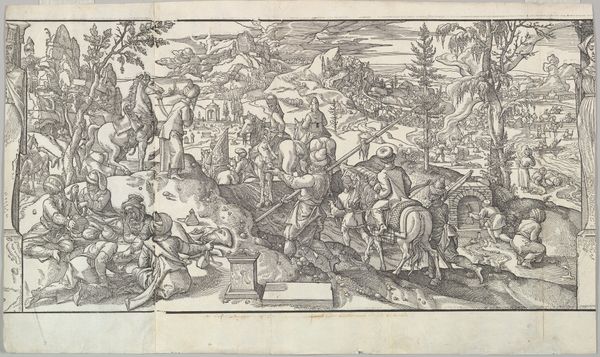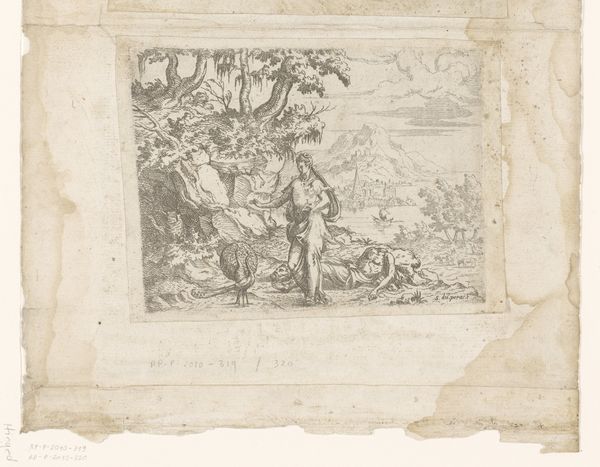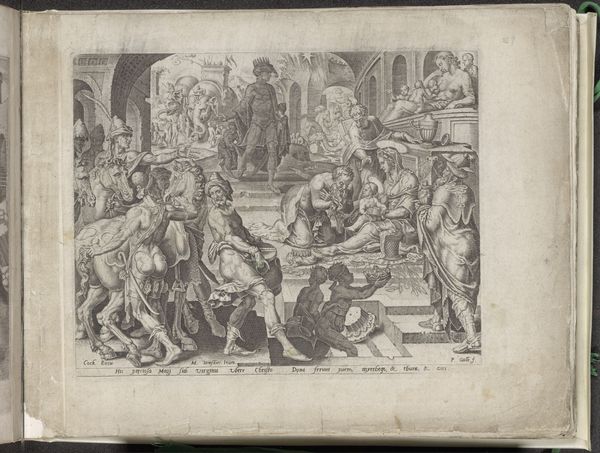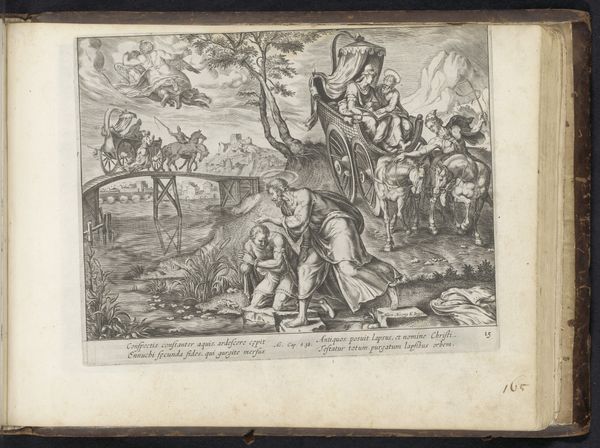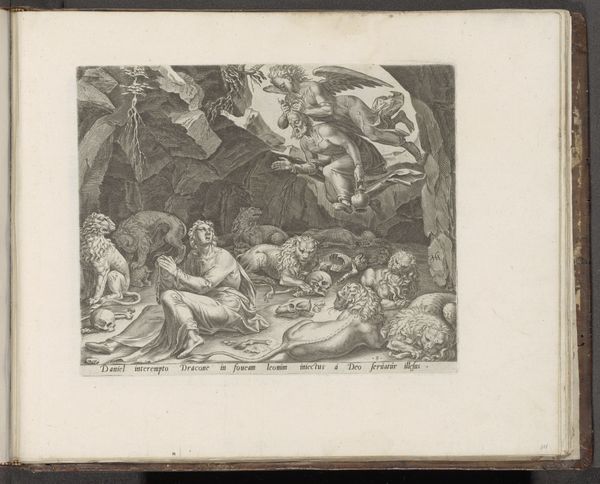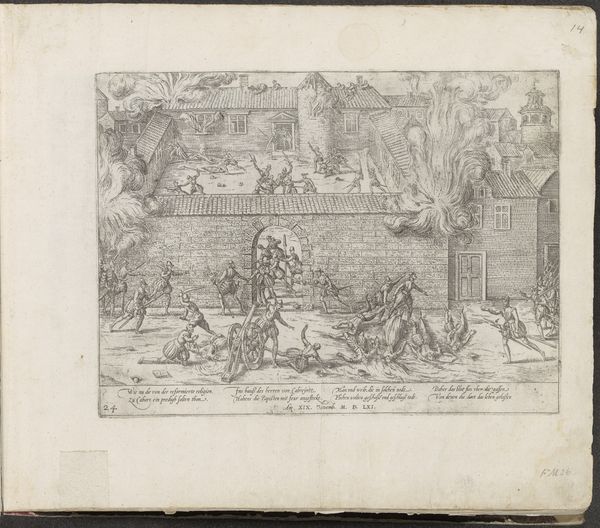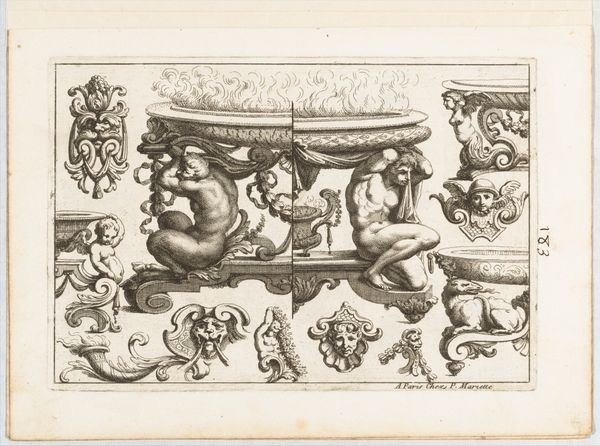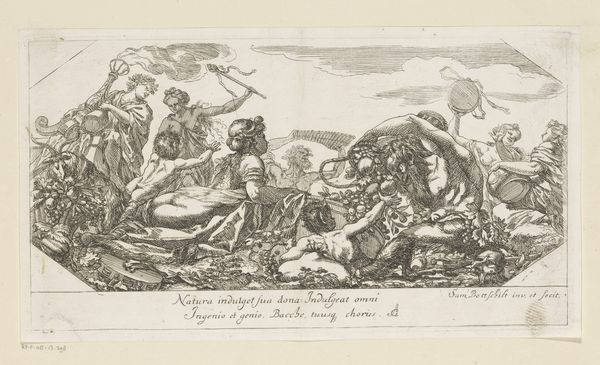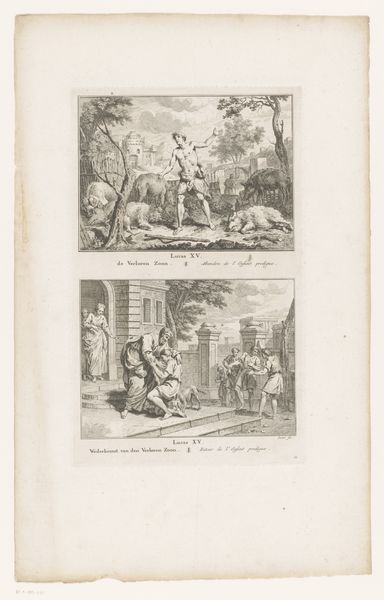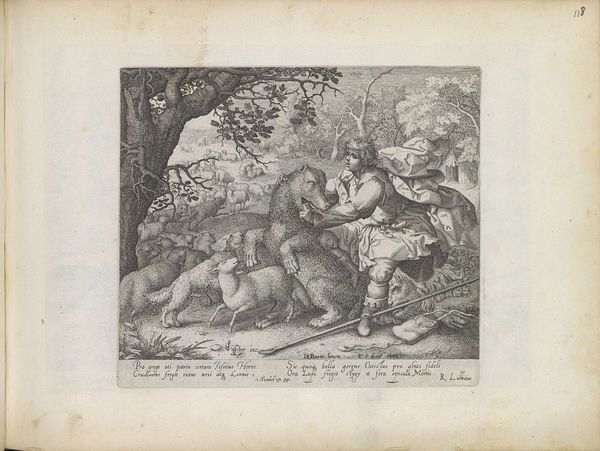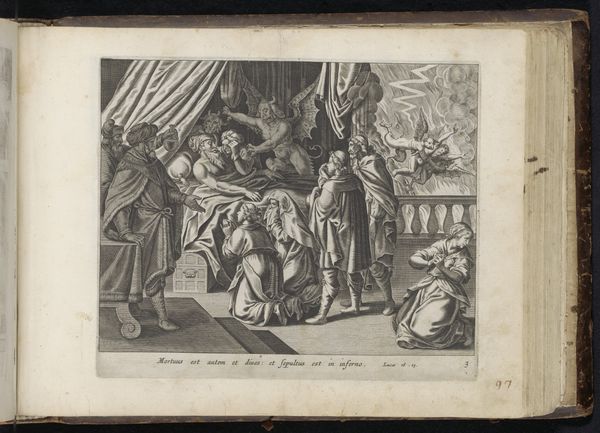
Minerva depicted at top with a shield and arrow vanquishing the Giants below, from Barberinae aulae fornix 1672 - 1682
0:00
0:00
drawing, print, engraving
#
drawing
#
allegory
#
baroque
# print
#
figuration
#
history-painting
#
engraving
Dimensions: Sheet: 15 7/8 × 26 5/16 in. (40.3 × 66.8 cm) Plate: 10 1/4 × 22 13/16 in. (26 × 58 cm)
Copyright: Public Domain
Curator: Here we have an engraving dating from between 1672 and 1682 titled "Minerva depicted at top with a shield and arrow vanquishing the Giants below, from Barberinae aulae fornix." It is currently held in the collection of the Metropolitan Museum of Art. Editor: What strikes me immediately is the theatricality. It’s dramatic and emotionally charged. Minerva’s dominance is undeniable, she’s practically bursting through the picture plane. Curator: Precisely! The dynamism is created through the use of diagonal lines, the billowing drapery, and the twisting, contorted bodies of the Giants. The composition invites the viewer's eye to traverse the scene. It encapsulates the quintessential Baroque aesthetic. Editor: Speaking of the Giants, let's think about their placement beneath Minerva. What does it tell us about power during this era, the perceived divine right perhaps, as well as gendered dominance, or who gets to be centered in art? Curator: That's an intriguing point. The scene draws from classical mythology, particularly the Gigantomachy, or the battle between the Olympian gods and the Giants. Here, the defeat of the Giants would symbolize the triumph of order over chaos, civilization over barbarity. Editor: Right, but how does that reading reflect, or perhaps obscure, the sociopolitical landscape of the time? It feels too straightforward to see it just as a mythological battle. Consider the patronage and the art market dynamics… What power structures are at play behind the scenes? Who is defining "order" and "chaos?" Curator: Well, consider that the engraver remains anonymous to us. They're rendering someone else's artistic vision here. However, this piece reflects the larger ideological context of the Baroque era, that placed value on classical themes and a certain understanding of universal truths. Editor: Precisely. This wasn’t made in a vacuum. Who benefitted from propagating such messages? These images aren’t simply aesthetic exercises; they actively shape cultural perceptions. Curator: It certainly provides an opportunity to delve into the complex relationship between art and the ruling classes. Editor: It all suggests further investigation, beyond the immediately visible. Thanks for expanding the reading for me! Curator: My pleasure. Examining the art-historical backdrop opens avenues for deeper thought!
Comments
No comments
Be the first to comment and join the conversation on the ultimate creative platform.

